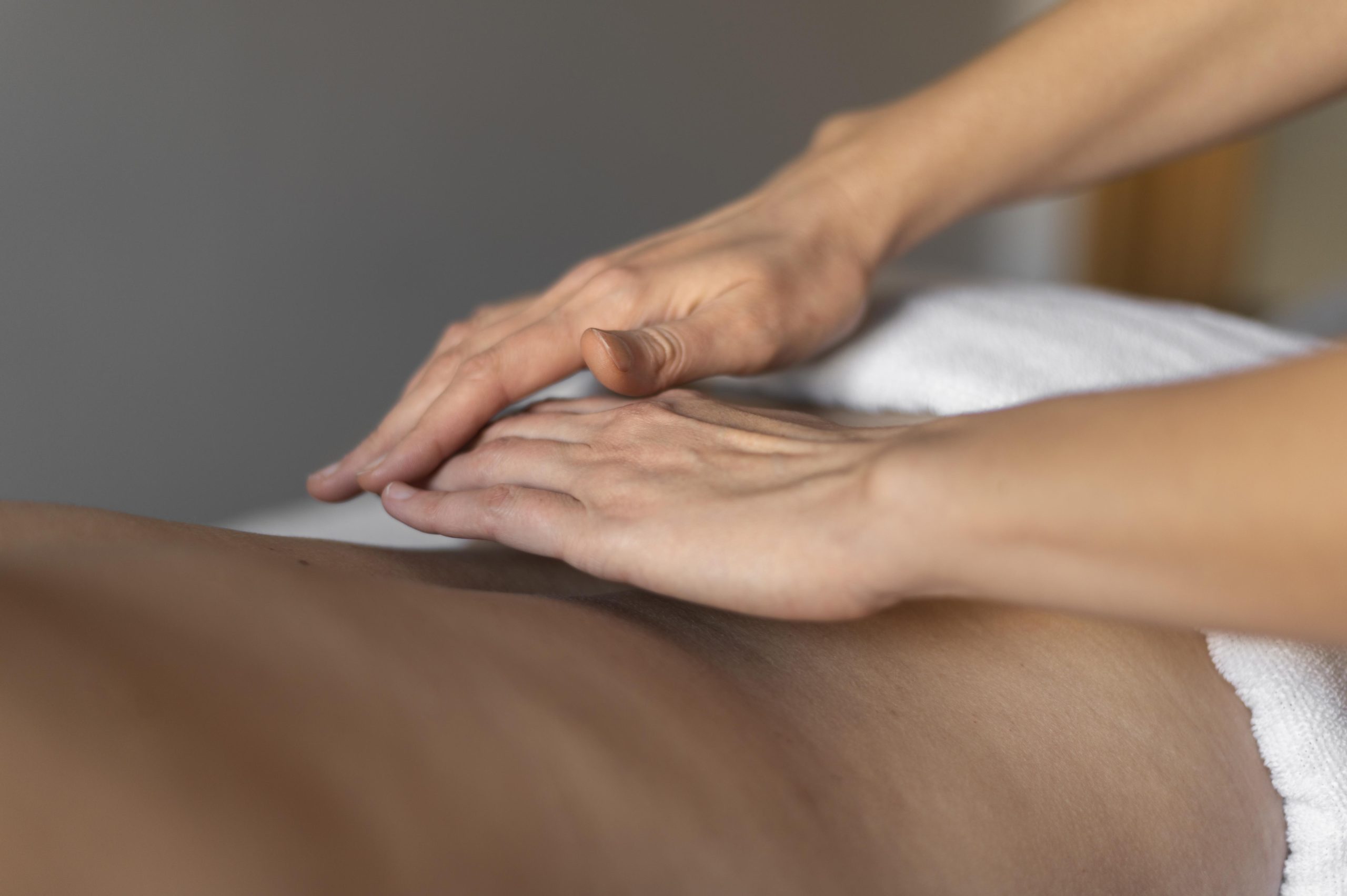Health
Choosing the Healthier Path

Deciding to choose activities and products that are good for your body and mind is the first step to a healthier path. With so many advice and diet books on the internet, what are the most effective ways to have a healthy mind and body? BidiTM Stick is a premium and innovative vape pen created to seamlessly ease the transition of adult smokers to a healthier alternative. It is produced by BidiTM Vapor, with its consumers’ health in mind.
There are many ways to massively change and improve towards a healthier path. However, it does not only limit to hours of gym workouts and eating only salad leaves. It’s about starting small and simple changes in your day-to-day living. “The trick to making your lifestyle healthier is to make small healthy changes every day. Some of the examples are taking the stairs instead of the lifts, increasing your fruit by one, drinking one extra glass of water, or quitting smoking,” says Dr. Craig Nossel, head of Wellness at Discovery Vitality.1
While there are many similar ways to live a healthy lifestyle, it looks different for everyone, and it means something different from one person to another. No matter what you choose to do, living a healthy lifestyle is a crucial part of disease prevention, wellness, and sustainability.
Here are some simple ways to start your journey to a healthier path.
Drink More Water. With busy schedules and daily tasks, we often forget this one simple task. Did you know that water makes up 60% of our bodies?2 It is essential to remove waste, carry out body functions, and distribute nutrients around our body. Since we lose water every day by urine, bowel movements, sweating, and breathing, we need to replenish our intake of water.
To remind yourself to drink water, you can place a full water bottle by your bedside or computer table. Stay hydrated and full of energy by drinking about 8-10 glasses of water a day.
Eat More Fruits and Vegetables. A quick search on the internet about eating healthier can lead to an array of various diets and theories. This load of information can be quite confusing and overwhelming for someone who has just started on a healthier journey. Vegetables are a source of many nutrients and minerals such as folate, vitamin K, vitamin A, manganese, and potassium. It also has dietary fiber, which is essential for good intestinal health.
Fruits are full of vitamins and minerals.3 Do you know that oranges have more health benefits than vitamin C pills? As often as you can, consume your vitamins and minerals from your diet rather than through tablets. Every morning, eat a variety of fruits to energize your body for the day.
Get a Good Night’s Sleep. Lack of sleep can lead to a variety of health issues, including diabetes, obesity, and even heart disease.4 Continued lack of sleep also weakens your immune system and makes you less likely to avoid colds and flu. Well-rested people handle stress better and have better control of their appetites.
Avoid caffeine and other stimulants close to bedtime. Alcohol can also disrupt your sleep. One of the things you can do to sleep better is to exercise. As little as 10 minutes of aerobic exercises, such as walking or cycling, significantly improve your sleep quality.5
Move Your Body. Movement is key to a healthy life. At our desks, in front of the TV, in a meeting – we spend most of our time sitting. Research has shown that exercise regularly provides significant benefits to our health, including an increase in lifespan, reduced risk of cancer, higher bone density, and weight loss.
Exercise can be daunting at first, so start by changing some of your daily routines. Choose walking instead of driving or taking transportation. You can also opt to take the stairs instead of the elevator. Try new and fun activities that require you to move your body. When you like the physical activity that you choose for yourself, you’re more likely to enjoy and naturally continue to do it. Exercise is about being safe, keeping healthy, and having fun all at the same time.
Calm Your Mind. A calm mind leads to a healthy body. Meditation calms your mind and soothes your spirit. 6 Contemplation is right for your soul, helps you cope with the demands of daily life, and may even help lower your blood pressure.
Swap to Healthier Alternatives. Starting on a healthier path is not easy. There are things that we cannot let go as quickly as the other things. What you can do is swap these things with healthier alternatives. Choose products that can help you transition to a healthier life.
One of the examples is smoking cigarettes. Smoking dramatically increases the risk of lung cancer, kidney cancer, esophageal cancer, and heart problems.
BidiTM Stick is a premium and innovative vape pen created to ease the transition of adult smokers to vaping through its premium 6% nicotine volume and variety of flavors. Its fully-charged battery with 280 mAh and 1.41ml of premium nicotine oil is equivalent to 500 puffs or 50 cigarettes per stick.
Adding to the seamless and satisfying experience it offers, the BidiTM Stick also gives importance to its effect on the environment. It believes in eco-conscious vaping by their “Save your Bidi. Save our Planet” platform. By recycling their 10 used BidiTM Sticks, the vape users get a new one in exchange.
With the help of BidiTM Stick, adult smokers can work towards cigarette smoking cessation.
Health
How Circuhealth Clinic’s Treatment Will Benefit You: A Comprehensive Guide

Maintaining optimal health can be challenging in the modern world. Busy lifestyles, poor dietary habits, and the stress of daily life can all contribute to a decline in our overall well-being. Circuhealth Clinic Clinic, led by the renowned Nadia Nassif, offers a holistic approach to health by improving circulatory health through various advanced, non-invasive treatments.
The Importance of Circulatory Health
Circulatory health is fundamental to overall wellness. The circulatory system is responsible for delivering oxygen and nutrients to every cell in the body and removing waste products. When this system is compromised, it can lead to a host of health issues, including chronic fatigue, poor skin health, and even cardiovascular diseases. Improving circulation can enhance energy levels, support organ function, and promote overall vitality.
Personalized Exercise Programs
One of the cornerstones of Circuhealth Clinic’s approach is the creation of personalized exercise programs. These programs are not one-size-fits-all; instead, they are tailored to meet the unique needs of each individual. Personalized exercise programs can significantly enhance circulatory health by boosting blood flow, which delivers essential nutrients and oxygen to tissues and organs.
For instance, regular physical activity strengthens the heart, improves circulation, and helps regulate weight. A tailored exercise program can reduce the risk of injuries, increase motivation by aligning with specific fitness goals, and provide consistent progress tracking for optimal results. This personalized attention ensures that you are not only getting fitter but also healthier in the most efficient way possible.
Detoxification Treatments
Detoxification treatments are another vital aspect of Circuhealth Clinic’s offerings. These treatments are designed to remove toxins that impair circulation, thus enhancing overall health. Circuhealth Clinic detoxification protocols include Hydration Therapy, Detox Diets, Herbal Supplements, and antioxidant consumption.
- Hydration Therapy: Drinking plenty of water and hydrating fluids helps flush out toxins, promoting better circulation.
- Detox Diets: Consuming a diet rich in fruits, vegetables, and whole grains, while avoiding processed foods and sugars, supports the body’s natural detoxification processes.
- Herbal Supplements: Using herbs like milk thistle, dandelion root, and burdock root, known for their detoxifying properties, supports liver function and toxin elimination.
By incorporating these detoxification treatments, Circuhealth Clinic helps to ensure that your body is free from harmful toxins, thus improving circulatory health and overall well-being.
Stress Reduction Techniques
Stress can significantly impact circulatory health. High-stress levels increase cortisol production, leading to various health issues such as high blood pressure, weakened immune function, and poor skin health. Circuhealth Clinic employs several stress reduction techniques to help manage and reduce stress, thereby supporting circulatory health.
For example, the 54321 method is a grounding exercise designed to manage acute stress and reduce anxiety. This method involves identifying five things you can see, four things you can touch, three things you can hear, two things you can smell, and one thing you can taste. This technique can be particularly useful before bedtime to promote relaxation and improve sleep quality.
Other stress reduction techniques include meditation, deep breathing exercises, and yoga. These practices help calm the mind, reduce cortisol levels, and improve overall mental health, supporting better circulatory health.

Importance of a Healthy Diet
A healthy diet is crucial for maintaining good circulatory health. Circuhealth Clinic emphasizes the importance of eating a balanced diet with plenty of fruits, vegetables, whole grains, and lean proteins. Such a diet can help reduce the risk of chronic diseases, improve energy levels, and support overall health.
For those looking to manage hypertension, Circuhealth Clinic suggests a specific dietary approach:
- 10 Hours Before Bed: No more caffeine.
- 3 Hours Before Bed: No more food or alcohol.
- 2 Hours Before Bed: No more work.
- 1 Hour Before Bed: No more screen time.
- 0: Number of times you hit the snooze button.
This structured approach helps regulate blood pressure and promotes better sleep, both essential for good circulatory health.
Conclusion
Circuhealth Clinic Clinic, under the expert guidance of Nadia Nassif, offers a holistic approach to health that focuses on improving circulatory health through personalized exercise programs, detoxification treatments, stress reduction techniques, and advanced diagnostics. By addressing the underlying causes of health issues and providing tailored treatment plans, Circuhealth Clinic helps individuals achieve optimal health and well-being.
Whether you are looking to manage a chronic condition, improve your overall health, or simply enhance your quality of life, Circuhealth Clinic’s comprehensive approach offers a path to better health. Embrace these treatments and lifestyle changes to experience the full benefits of improved circulatory health and overall wellness.
-

 Tech3 years ago
Tech3 years agoEffuel Reviews (2021) – Effuel ECO OBD2 Saves Fuel, and Reduce Gas Cost? Effuel Customer Reviews
-

 Tech5 years ago
Tech5 years agoBosch Power Tools India Launches ‘Cordless Matlab Bosch’ Campaign to Demonstrate the Power of Cordless
-

 Lifestyle5 years ago
Lifestyle5 years agoCatholic Cases App brings Church’s Moral Teachings to Androids and iPhones
-

 Lifestyle3 years ago
Lifestyle3 years agoEast Side Hype x Billionaire Boys Club. Hottest New Streetwear Releases in Utah.
-

 Tech6 years ago
Tech6 years agoCloud Buyers & Investors to Profit in the Future
-

 Lifestyle4 years ago
Lifestyle4 years agoThe Midas of Cosmetic Dermatology: Dr. Simon Ourian
-

 Health5 years ago
Health5 years agoCBDistillery Review: Is it a scam?
-

 Entertainment5 years ago
Entertainment5 years agoAvengers Endgame now Available on 123Movies for Download & Streaming for Free
